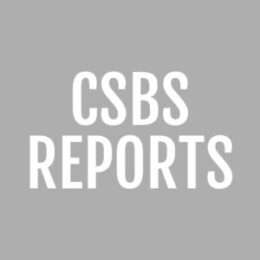Summary
In continuation of the COVID-19 survey series launched by the Center for Social and Behavioral Science, we investigated how framing techniques shaped the perceptions of the Safer Illinois App. The large proportions of individuals reporting uncertainty about using smartphone technology to help combat COVID-19 casts doubt as to whether public health campaigns that utilize these technologies will be effective. As a result, it is crucial to construct effective public health messages that can persuade individuals to act in the public interest. In the present analysis, we thus investigated how 1) the persuasive message framing and 2) the source framing shaped perceptions of trust and likelihood to use the Safer Illinois App. Results showed that all message framing strategies (e.g., by emphasizing social norms, or “getting back to normal”) were approximately equally effective, though social norms framing may be marginally more effective. In addition, each source (e.g., University of Illinois, OSF HealthCare) was approximately equally persuasive. A follow-up study specifically on students and residents in Champaign-Urbana may be informative.
Method
Participants saw a description of the Safer Illinois App that randomly varied 1) a message intended to persuade users of its utility and 2) the source who created and manages the application (see below for examples). Participants then answered questions about how likely they would utilize the app, as well as how much they would trust the app with their personal data. Participants were recruited from a panel survey from Amazon’s Mechanical Turk. The sample consisted of N=1,203 individuals residing in the United States (60.8% male, mean age=37.9, SD=11.9). The sample size was determined via an a priori power-analysis as the minimum needed to detect a small omnibus effect size at 80% power.

Messages Used
| Social Norms | …everyone has made individual contributions to help fight COVID-19. Likewise, 84% of people surveyed have indicated that they are willing to chip in and do their part to stop COVID-19 through collective contact tracing. We hope that you would be willing to do your part as well. |
| Getting Back to Normal | …is the best way to get your community back to normal. The COVID-19 application will allow for stores, restaurants, and social venues to open up faster, and for normal social and work life to get back to normal. |
| Protecting the Vulnerable | …is the best way to protect the most vulnerable populations and to make sure that those who are most at risk of contracting COVID-19, such as essential health workers, and those most at risk of dying from COVID-19, such as the elderly and those without access to health care, are protected. |
| Protecting Family and Friends | …is the best way to protect your family and close friends from COVID-19. The app will allow for individuals to better understand and control the risk of exposure to their family and close friends. |
| All Messages Combined | …is the best way to protect your family and close friends, get your community back to normal, and protect the most at-risk populations from COVID-19. The vast majority of people are doing their part – join in the effort. |
Sources Used
| University of Illinois at Urbana-Champaign |
| Champaign-Urbana Public Health District |
| OSF HealthCare |
| University of Illinois at Urbana-Champaign, Champaign-Urbana Public Health District, and OSF HealthCare |
Full Results
Message Framing
How likely would you be to download and use an application like the one above on your own?

Note: Omnibus p = .076, 1 = “Very unlikely”, 4 = “Very likely”. Error bars represent the standard error of means.
How likely would you be to download and use an application like the one above if you were requested to by your state and local community leaders?

Note: Omnibus p = .032, 1 = “Very unlikely”, 4 = “Very likely”. Error bars represent the standard error of means.
How much would you trust this application with your data?

Note: Omnibus p = .177, 1 = “Not at all”, 4 = “Very much”. Error bars represent the standard error of means.
Source Framing
How likely would you be to download and use an application like the one above on your own?
Note: Omnibus p = .262, 1 = “Very unlikely”, 4 = “Very likely”. Error bars represent the standard error of means.

How likely would you be to download and use an application like the one above if you were requested to by your state and local community leaders?

Note: Omnibus p = .098. 1 = “Very unlikely”, 4 = “Very likely”. Error bars represent the standard error of means.
How much would you trust this application with your data?

Note: Omnibus p = .164, 1 = “Not at all”, 4 = “Very much”. Error bars represent the standard error of means.
